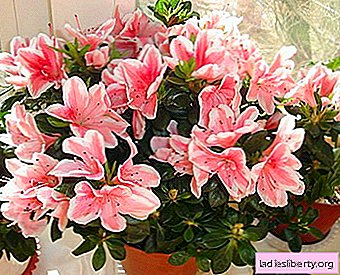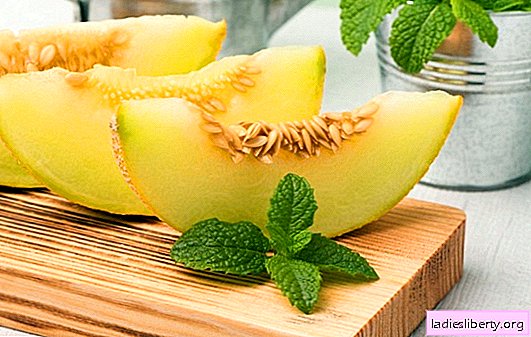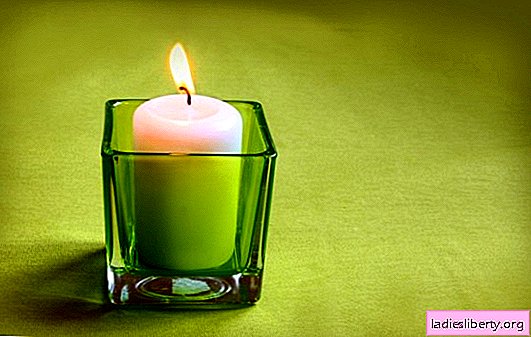
Azalea (rhododendron) is an evergreen shrub perennial from the heather family, with a lignified stem. It is a very ancient species, because its history began about 50 million years ago. At that time, the ancestors of modern rhododendrons were common in large areas of the globe. However, glaciers that later came to Earth destroyed this plant in vast territories, as a result of which significant gaps were formed in their natural areas.
Today, the genus rhododendron is represented by more than 1000 species, the main places of growth of which are South China, the Himalayas, Japan and Korea. Other major areas of rhododendron distribution are eastern and western parts of North America, Asia Minor, the Caucasus, Malaysia, New Guinea, and Northern Australia. Four types of rhododendrons are common in Europe.
This plant has long been attributed some useful properties. For example, with the help of azalea, it is possible to cure barley in the eye by applying a blindfold to its eyes with its petals. It is also believed that contemplation of beautiful azalea flowers for half an hour soothes tired eyes and returns clarity to vision.
Why so attracted azalea gardeners? First of all, with its ability to bloom from November to May, delighting others with beautiful elegant flowers. Thus, early varieties of azaleas are characterized by flowering from December to January; mid-late azaleas bloom from January to March; late varieties of azaleas bloom from February to April. Azaleas grow quite slowly, depending on the species, they can reach a height of 40 cm to 150 cm.
Azalea - Care
Of course, the growth rate of a plant, its ability to bloom and health depend mainly on the care and conditions. Low and wide pots are suitable for growing azaleas, as they have a superficial root system. The soil is needed acidic, best of all - coniferous. You can buy a special earthen mixture for rhododendrons at a flower shop.
An important part of rhododendron care is lighting. They are photophilous, therefore, choosing a place to place a pot with a plant, preference should be given to a place where it will be illuminated by bright but scattered light (direct light for rhododendrons is no less harmful than a deep shadow).
It is very important to ensure that the plant has a certain temperature in the room where they are located. In winter, it should be from 12 ° C to 15 ° C, in summer - from 18 ° C to 20 ° C.
Rhododendrons are also sensitive to watering. They equally suffer from drying out of an earthen coma, and from excessive moisture. Irrigation requires water that does not contain lime and chlorine. If it is from the water supply, then it should be defended for a day.
From March to September, the plant must be watered every other day and sprayed once a day, in hot times - watered twice a day and sprayed several times, since the earth mixture for azaleas is characterized by a tendency to quickly dry out.
Starting in autumn, watering should be significantly reduced and the temperature of the plant content should be reduced to 6-8 ° C, since flower buds are laid at this time. During this period, it is necessary to provide azaleas by watering only from the pallet, in order to avoid overmoistening of the earthen coma, leading to a lack of oxygen and rotting of the roots.
After two months, the temperature can again be raised to 12 ° C to 15 ° C, and then after about two weeks the buds will appear. To have more, plants need to be cleaved several times, removing the apical buds. For early varieties, the last pinching should occur in mid-July, for late varieties - at the end of July - early August. Later pinching can delay flowering, as buds are already forming in August.
Azaleas are fed once every 2 weeks, in spring and summer - using special fertilizers for azaleas; in winter and autumn, during budding - with superphosphate. Fertilizers that are used to feed rhododendrons should not contain chlorine, since it is poison for them. In order to prevent yellowing and stretching of leaves in summer, starting in May, azaleas are fed once a week with a 0.5% solution of iron-ammonium alum (diluting 2 g of fertilizer in 1 liter of water).
Azalea - transplant and reproduction
Rhododendrons are propagated by cuttings, which are cut twice a year, in the middle of spring and summer. In spring, for cutting cuttings, plants are used, nipped in July last year, and in the summer - annuals. For this purpose, semi-lignified shoots are taken that have a length of 7 to 9 cm after trimming plants.
For harvesting cuttings use only healthy plants. One uterine plant can be used for cutting cuttings only once a year. Treated with a special solution, the cuttings are planted in a nutrient substrate and watered abundantly, and then provide daily spraying until completely rooted. The bottom of the box or pallet is covered with broken shards or a three-centimeter layer of gravel, onto which the same layer of coarse sand is poured, and already on it - a ten-centimeter layer of coniferous earth. Such a substrate promotes faster rooting of cuttings compared to sand.
When young plants begin to grow, their daily watering and spraying should begin to ensure constant substrate moisture. After reaching a height of 2-3 cm, young plants are transplanted into separate pots filled with coniferous earth.
Subsequently, rhododendrons are transplanted after reaching the age of three every two years, immediately after flowering.
Azalea - possible diseases and pests
The main pests of rhododendrons include azalea aphids, which are used for reproduction by soot fungus, and a red tick.
When growing azaleas, some painful conditions of the plant can occur, caused, as a rule, by errors in care. So, wrinkling and falling of leaves indicates insufficient watering of the azalea; reduction of flowering period, as a rule, occurs due to too dry air in the room; leaves may fall due to waterlogging of the soil, etc. However, if you learn how to properly care for azalea, then it will decorate your life and bring a lot of positive emotions to it.











